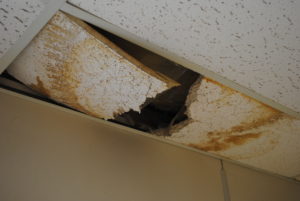 This is the time of year where our family suffers from hay fever as well as asthma. You’ve probably noticed all the pink tree blossom petals blowing to the ground, but the flower’s pollen is almost invisible. I can only see it this week because it is a fine yellow haze on the surface of my car.
This is the time of year where our family suffers from hay fever as well as asthma. You’ve probably noticed all the pink tree blossom petals blowing to the ground, but the flower’s pollen is almost invisible. I can only see it this week because it is a fine yellow haze on the surface of my car.
How does hay fever and asthma relate to school building conditions? The quality of the air inside a building is invisible to us. But its effects are not. Ontario schools need a shocking amount of repairs so that they can provide adequate air quality for their students, including the large number who suffer from asthma.
Asthma is one of the leading causes of school absenteeism in the States, and we can assume that it is also true in Canada. Children cannot succeed in Ontario schools if they are absent! While there is presently no cure for asthma, current belief is that it can be controlled through medical treatment and the management of environmental triggers.
Air may be invisible, but the importance of having access to good air quality is not – our students need it in order to be successful. A recent 2014 study in Australia found that serious work in mold removal, ventilation or roof repairs has a significant effect on academic performance. Schools that had large budget work done in these categories could see an improvement of 4% in pass rates, and marks up by 0.15 standard deviations.*
Until recently, we didn’t realize that it is possible to improve the air in an Ontario school. There are new options available now for classroom air quality in Ontario that cannot be rolled out until Provincial funding is made available. Let your local MPP know that air quality may be a cost effective way of raising academic standards!
If you have a child with asthma, here are some resources:
https://www.lung.ca/lung-health/air-quality/indoor-air-quality
*Tess M. Stafford, February 2014, Department of Economics, The University of New South Wales, Kensington NSW 2052, Australia https://www.gwern.net/docs/2015-stafford.pdf

